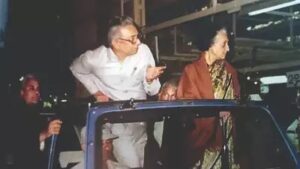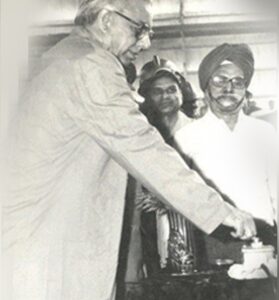June 1968. It was a couple of months after the launch of the economic fortnightly, Industrial Economist. We carried a short note on Madras Refineries Limited not buying the boiler made at the high-pressure boiler plant of BHEL at nearby Tiruchi but importing it from the American GE.
In the next couple of days I received a letter from one Mr V Krishnamurthy, the then General Manager, BHEL – Tiruchi, inviting me to visit Tiruchi which I promptly accepted. Through the first day, I was shown around the sprawling manufacturing facilities and had meetings with Section Heads S V S Raghavan, (Finance), M R Naidu (Manufacturing), Cavinathan – V R Deenadayalu (Marketing) – each one of these later became chairman of a PSU. I gathered, even by then BHEL-T was exporting boilers to Malaysia, three years ahead of firing its first boiler at Ennore!
Next day I had a long (three hour) interview with Mr V Krishnamurthy (VK) who explained with passion the work being done at Tiruchi. He pointed with pain, to not just for Madras Refineries, even for the Dhuvaran Thermal Station at Gujarat, GE was preferred over BHEL. He was hopeful of BHEL not missing out any order for boiler in future.
This came true: the VK-SVS Raghavan team managed BHEL-T so well that in just four years, it succeeded in getting the much older Heavy Electricals India Limited merged with BHEL in 1972. The duo operating from the top floors of Hindustan Times House in Delhi, ensured the meteoric rise of the corporation: from 60 MW capacity power units, BHEL expanded through the decade to 110 MW – 120 MW, 200 MW – 250 MW to 500 MW. The plethora of designs and models were also rationalised and standardized. With aggressive publicity, the Public Sector reaching commanding heights of the economy was boldly announced.
VK was appointed Secretary – Heavy Industry in 1977. This provided him the opportunity to look closely at the poor state of technology and manufacturing of the Indian automobile industry… 
| At a webinar on Privatisation of Public Assets organised by IE last year, economist and former Deputy Chairman, Planning Commission, M S Ahluwalia, while commenting on the governance of public sector stated: “in the past it was dependent on the personal relationship between the head of the organisation and the political support that it got: V Krishnamurthy, for example, was a hugely successful public sector manager who had political backing from the prime minister’s office at the times of both Indira Gandhi and Rajiv Gandhi. So, he could literally ignore the industry minister which he had mentioned in his own biography! If he had succumbed to what the then industry minister wanted, we would not have had Maruti, but would have had some lousy lower grade European car and we would not have had an automobile revolution.” |
With handpicked lieutenants like R C Bhargava, S Natarajan, Khatter… and supported by the Japanese experts, Maruti met with instant and growing support. It helped spread the Japanese work culture across the entire manufacturing and marketing chain. Executives like Natarajan further refined on this. When bookings were open with an advance of Rs 10,000 per car, Maruti got around Rs 140 crore. It retained this paying interest of 7 per cent and lent to other PSUs at 15 per cent pa! This continued for a while and I reported that financial engineering proved even more profitable than production engineering!

Through the 1990s VK was embroiled in court cases charged with promoting the businesses of his sons. The courts acquitted him of all the charges.
Dr Manmohan Singh invited him to head the National Manufacturing Competitive Commission. For a decade VK headed this commission with characteristic passion and distinction. His deep knowledge of technology and manufacturing were helpful in getting a special place for manufacturing with target to achieve a 25 per cent share of GDP for manufacturing. Today there are welcome signs of moving towards this target. A founder-member of the Rajiv Gandhi Foundation, VK was also involved in the vast range of social and economic development activities of the Foundation.
VK shifted his attention to his state to which he returned after 2014. He spent lots of effort on the development of his village Karuveli in Thanjavur where he renovated the ancient Shiva temple. Worried over the continued large imports of edible oil, he focused on palm tree cultivation across Thanjavur and adjoining districts. In Tiruchi, he acquired the venerated, National College, which celebrated its centenary recently… He spent liberally on renovating and expanding the facilities and also set up a school and a Veda Patasala.
Even into his Nineties, VK was keenly involved in issues relating to engineering, technology, management, production and development issues. He could be ranked high among the builders of modern India.
